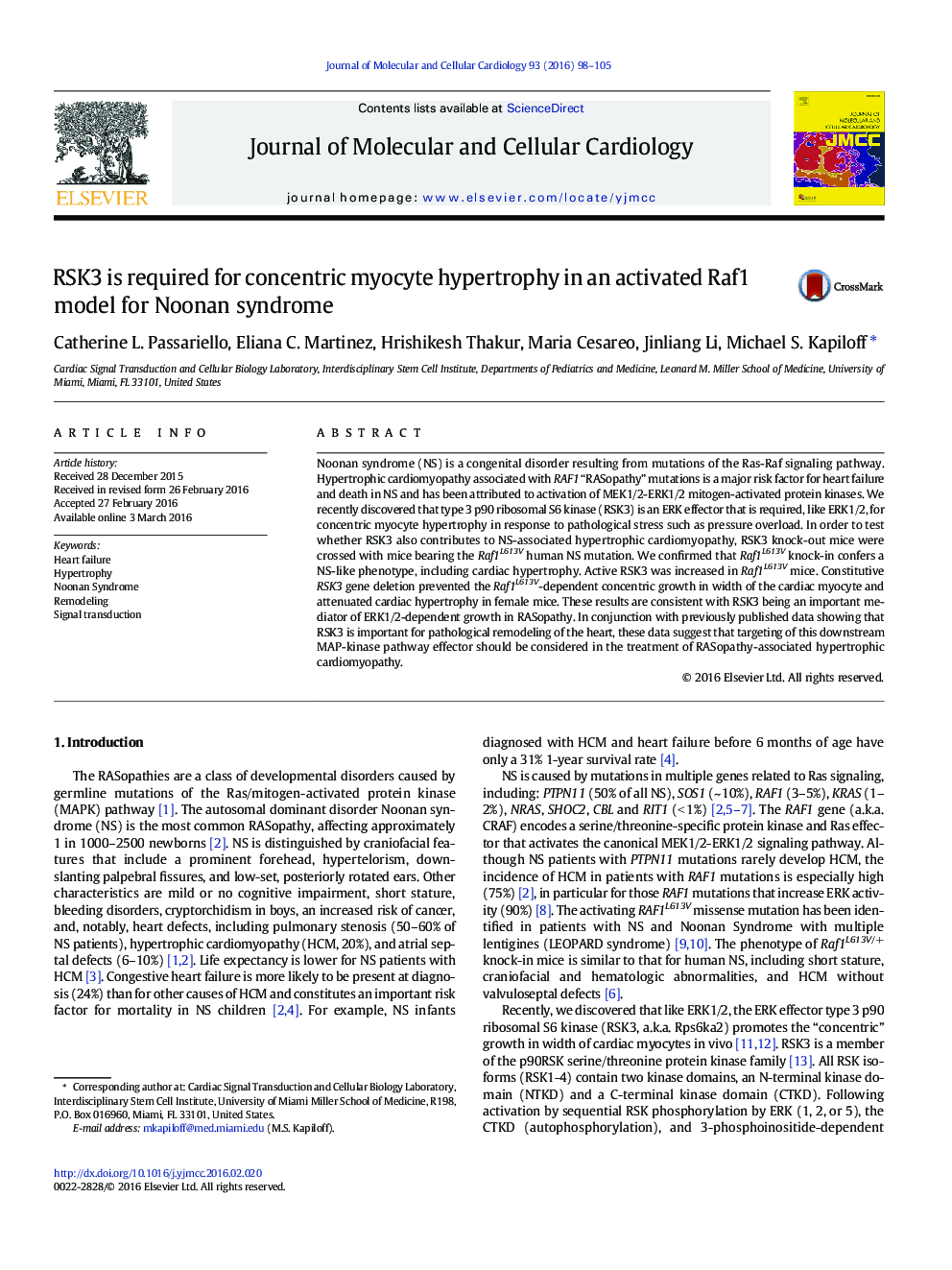| Article ID | Journal | Published Year | Pages | File Type |
|---|---|---|---|---|
| 8473864 | Journal of Molecular and Cellular Cardiology | 2016 | 8 Pages |
Abstract
Noonan syndrome (NS) is a congenital disorder resulting from mutations of the Ras-Raf signaling pathway. Hypertrophic cardiomyopathy associated with RAF1 “RASopathy” mutations is a major risk factor for heart failure and death in NS and has been attributed to activation of MEK1/2-ERK1/2 mitogen-activated protein kinases. We recently discovered that type 3 p90 ribosomal S6 kinase (RSK3) is an ERK effector that is required, like ERK1/2, for concentric myocyte hypertrophy in response to pathological stress such as pressure overload. In order to test whether RSK3 also contributes to NS-associated hypertrophic cardiomyopathy, RSK3 knock-out mice were crossed with mice bearing the Raf1L613V human NS mutation. We confirmed that Raf1L613V knock-in confers a NS-like phenotype, including cardiac hypertrophy. Active RSK3 was increased in Raf1L613V mice. Constitutive RSK3 gene deletion prevented the Raf1L613V-dependent concentric growth in width of the cardiac myocyte and attenuated cardiac hypertrophy in female mice. These results are consistent with RSK3 being an important mediator of ERK1/2-dependent growth in RASopathy. In conjunction with previously published data showing that RSK3 is important for pathological remodeling of the heart, these data suggest that targeting of this downstream MAP-kinase pathway effector should be considered in the treatment of RASopathy-associated hypertrophic cardiomyopathy.
Related Topics
Life Sciences
Biochemistry, Genetics and Molecular Biology
Cell Biology
Authors
Catherine L. Passariello, Eliana C. Martinez, Hrishikesh Thakur, Maria Cesareo, Jinliang Li, Michael S. Kapiloff,
